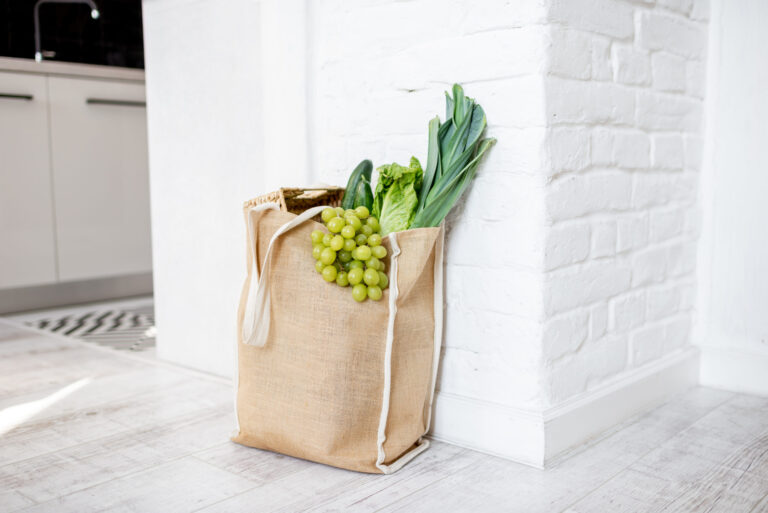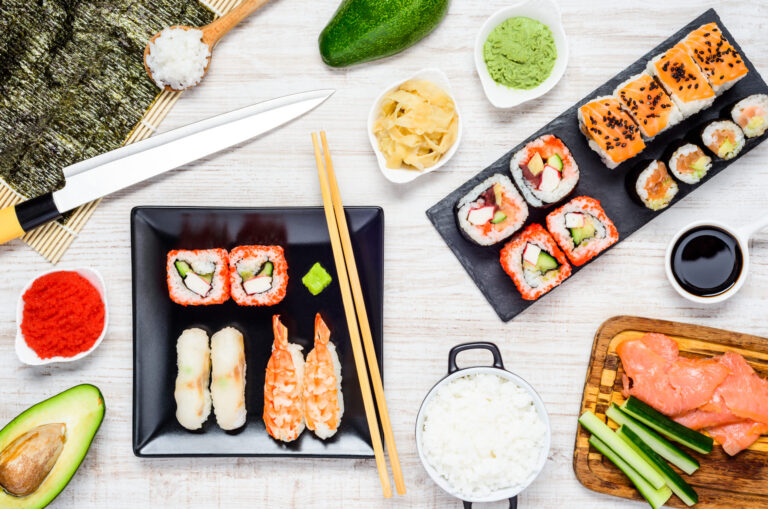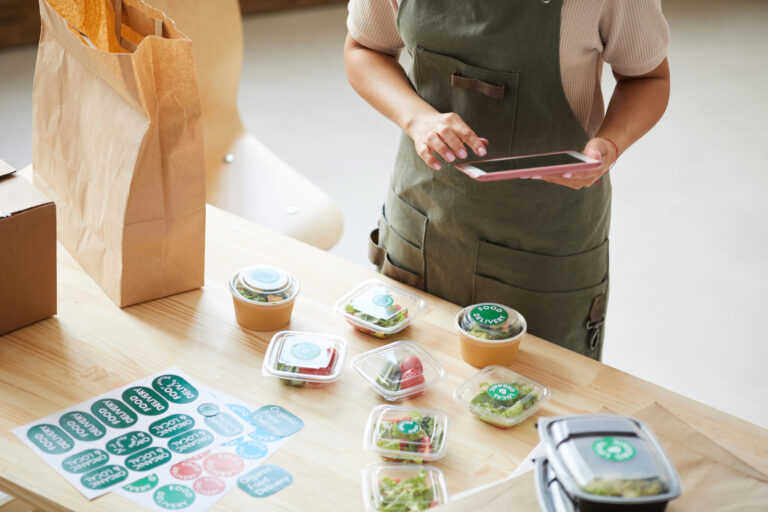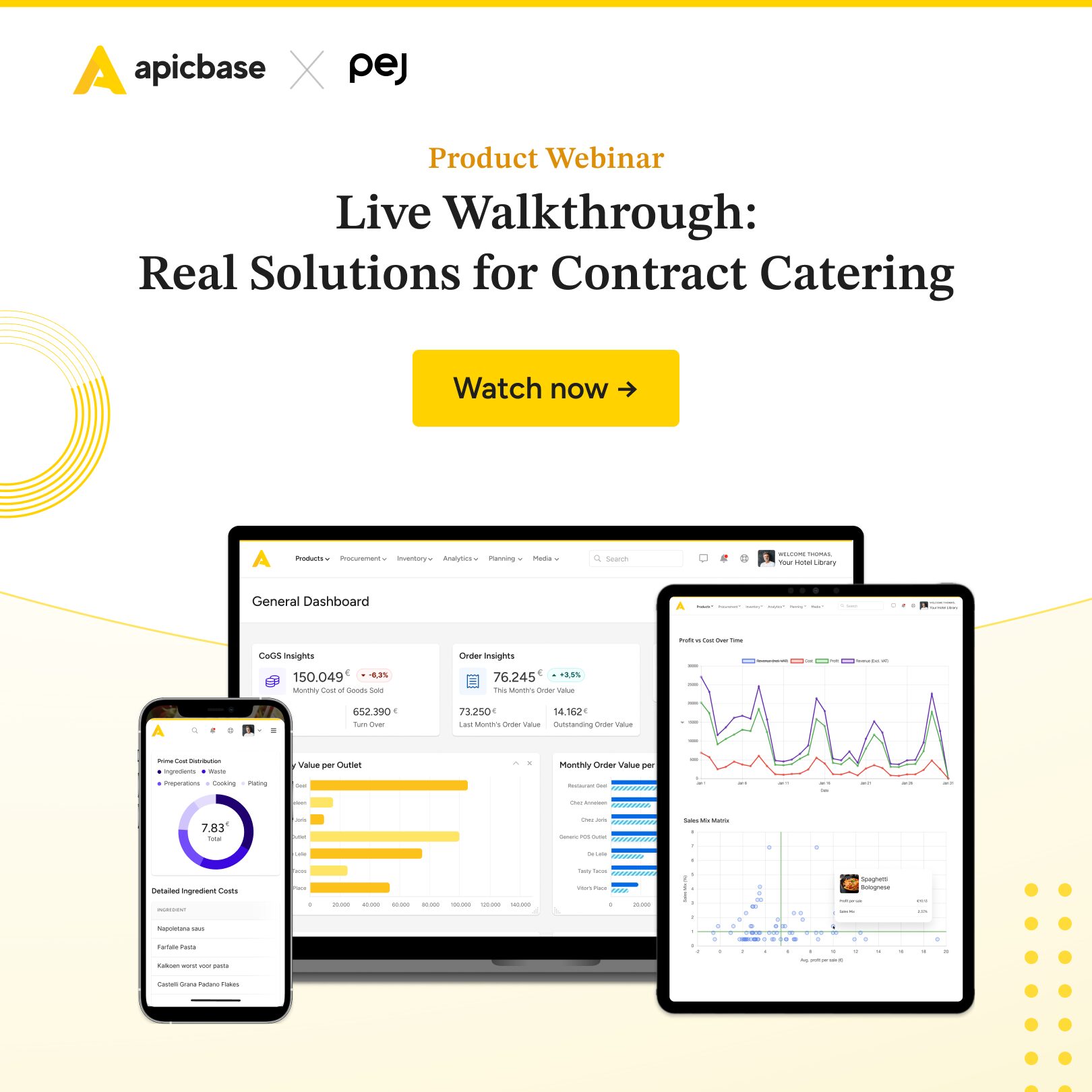What innovations will stick around when the air clears up again, and why?
For this trends post, we didn’t analyse the near future – it is still very unclear – but looked far back and ahead instead.
How else to research restaurant trends for 2021? No-one knows when things will go back to normal. And what ‘normal’ will look like.
What Drives Innovation And Long-Lasting Trends?
It is not a pandemic.
COVID-19 delivered a massive blow to the restaurant and foodservice industry. No doubt about it.
The situation, however, is not static. Things will change again. People will overcome, and the industry will recover.
Question is, what will prove to be a covid patch up and what innovations are here to stay. In this article, we’ll focus on the latter.
It is safe to say that when the dust settles, things won’t go back to how they were in 2019. That means not lockdowns or social distancing are driving these innovations.
We think the foodservice industry has been reinventing itself for many years. And the root causes for these innovations are:
- High expenses and operating costs
- High workforce turnover
- Massive competition
- Changing consumer needs and expectations
- Changing regulations
Running a food business can feel apocalyptic even without the tidal wave of a pandemic crashing down on you.
Restaurants were re-evaluating their inventory practices, menu items, operational processes and general strategies long before corona hit the world.
Industry leaders will tell you that these restaurant trends 2021 were already on the horizon. Except implementation was planned in 2025.
In that sense, COVID-19 is more of a massive engine for ongoing evolutions; then it is disruptive. It is not the changemaker; it is the accelerator.
COVID-19 is not the changemaker. It is the accelerator.
With that in mind, let’s take a look at our list.
The 9 Restaurant Trends for 2021 Are:
- Multi-channel for multiple revenue sources
- New leftfield competitors
- Digitisation of the back of house
- Single source of truth takes centre stage
- Rise of the multi-brand shared kitchen model
- Smaller menus for more control
- Plantbased for the win
- Digital marketing is key
- Packaging revolution
There are two underlying currents here – the questions:
- How to make my product available?
- How to set my company up for success in the future?
Let’s start with what you know already: online ordering went through the roof.
It is not that people don’t like dine-in anymore. That is still a precious experience. The issue sits at the other end of the spectrum. People want to invest far less time in preparing a meal than they used to.
Food delivery sits on the line between grocery shopping and restaurant visits. When you are hungry, a meal is only a click away. There is no going to shops involved, no standing in line, no making reservations or cleaning the kitchen.
Convenience is at an all-time high.
What About Dine-in, Will It Re-emerge?
It will.
People will be glad to get out of the house again. People will always seek each others company and enjoy the experience of being at a restaurant.
But when it comes to satisfying the need for food, customers now have a range of options. A prepared meal doesn’t have to come from a traditional restaurant anymore.
Take the rise of ghost kitchens, which we discussed in our restaurant trends 2020 article. Ghost kitchens could create a 1 trillion dollar global opportunity by 2030, according to Euromonitor. To be clear, that is 1.000.000.000.000 dollar.
There is no arguing: the demand for delivery is here to stay.
Is delivery a new thing? Not at all, but the thing that changed in 2020, is that now everyone is aware of its convenience, grannies included. And that is not going to change anytime soon.
Okay, with that out of the way, let’s dig into the individual trends. In no particular order, here they are.
1. Multi-channel = Multiple Revenue Sources

Last year the pandemic forced food businesses to pivot their operation.
With the most challenging parts of the learning curve behind them, some of these new channels now provide stable revenue streams. And growth opportunities.
Takeout, delivery, subscriptions and meal kits; the foodservice industry is covering ’new‘ ground. All segments do so, QSR, fast-casual, FSR and all else.
(Coffee shops take the lead in the quest for recurring revenue. Also, check out this frying pan pizza kit.)
Not all new channels will generate new revenue. In part, they only redistribute existing income. That is not a bad thing. It means these businesses are adapting to changing customer expectations.
If 2020 showed us anything, it is that agility is critical. Putting all your eggs in one basket no longer makes sense for an industry where a few rainy days can plummet footfall.
To diversify is to thrive. Mind you, diversifying revenue sources is not like flipping a switch. It takes time and energy but is well worth the effort.
Rethinking strategy, product and operations opens a window to improve procedures, to offset expenses, and to outfox the competition.
2. Leftfield Competitors With Deep Pockets Enter The Pitch

Grocers add ghost kitchens to their arsenal.
Deloitte says about the impact of COVID19 on grocers and food retailers:
„They are responding to an unprecedented demand that strains the entire ecosystem. Customers from all demographics, but especially those over 50, have shifted to digital and delivery, ushering in a new normal for food retail that may become permanent.“
Supermarkets have been inching towards the foodservice industry for decades. Convenience is the main driver.
Grocers always had a range of products that cater to customers looking for an easy meal. Think of meal kits, ready-to-heat and ready-to-eat products, and even dine-in in some cases.
The next logical step is to provide chef-prepared, on-demand, home-delivered meals.
Besides, the age-old supermarket model (you go to a place to buy your groceries) is losing steam. It doesn’t offer much opportunity for growth anymore.
Adding a cloud kitchen to a supermarket makes perfect sense. Ask Kroger and Ahold Delhaize for example. They both launched delivery kitchens last year.
Think about it:
- Supermarkets have real estate in urban areas;
- They already have a home-delivery network;
- They are at the source of the supply chain;
- They operate cost-effectively.
These are all critical elements for a successful cloud kitchen operation. It makes it all the more likely that in 2021 grocers will become a fierce competitor in the delivery market.
3. Digitisation Of The Back-Of-House

„In 2021, restaurant tech investment will be all about the back-of-house.“
Sounds like something our sales reps would say, right? After all, digitising the back-of-house is what Apicbase does.
Except, it is not anyone from Apicbase who said it.
It is the headline of an article by The Spoon journalist Jennifer Marston. She explains:
„Restaurant tech investment reached new heights in 2020, but the bulk of that went to software, devices, and other tools meant to power the front of house. By contrast, in 2021, we will see that balance shift. This time next year, I expect to be writing about the vast amount of investment funnelled into making the back of house safer, more efficient, and more automated.“
Forbes also noted:
„One thing sure stands out: there has been a notable shift toward a growing number of solutions focused on back-of-house operations and systems (versus guest-facing solutions).“
In the intro, we list the main drivers for innovation in the restaurant industry. High expenses and operating costs are at the top of that list.
Automation, efficiency, and control are the keywords for this section.
Back of house tech provides the insights needed to streamline production. Plus, it offers a firm footing for growth and upscaling.
And because workforce turnover is high, the automation aspect appeals to many foodservice chains.
A restaurant’s back-of-house has countless moving parts. Knowing where all the money goes is challenging without the right tech.
Think of how a small mistake in product development impacts purchasing, overstocking, food waste and food cost.
Accurate data about the production process helps to optimise recipes, menu engineering and procurement. And boost the bottom line.
For all these reasons we expect investments in this area in 2021.
4. The Single Source of Truth Takes Centre Stage

Building a restaurant’s tech stack comes with an unwanted consequence: data silos.
Information sits in one system and can’t translate to another. And, since the restaurant industry became a data-driven industry, almost overnight.
That has become a real problem.
EPOS, online orders, purchase orders, inventory counts, accounting, dietary information, menu engineering, kitchen tech – there are so many apps running in the background, and they are churning out so much info that it becomes hard to make sense of it all.
Organisations end up with stacks of valuable but unrelated information. Try and find cost-reducing or revenue-boosting insights in there.
But also, it undercuts the need for traceability and predictiveness [to identify potential sources of cross-contamination and forecast purchasing needs].
That is why we believe in 2021 the industry we’ll move towards more solid tech ecosystems.
What is a Single Source of Truth?
A single source of truth is a system that connects the dots between an organisation’s data sources. It is a platform capable of capturing the information, making sense of the data and sharing it group-wide.
We expect to see a more holistic approach to technology because so many people in a restaurant organisation these days rely on real-time data.
Recommended Resource
How Hotels are Benefiting from a Single Source of Truth for F&B Management
Think about an F&B manager who uses the stock and sales data to optimise procurement. What if part of that information is locked in a spreadsheet on the executive chef’s laptop. Then purchasing becomes a guessing game, which leads to over, under and no stocks.
Other good examples are the allergen and nutritional values reports. The product development team will make the reports. That information has to make it to the front-of-house staff and customer-facing apps.
For a multi-unit operator to display allergen information at every location is hard, but is easy when data travels flawlessly throughout the company. And because recipes, menus and suppliers change all the time, access to real-time data is absolutely crucial to avoid incidents.
5. Rise of the Multi-Brand Shared Kitchen

Cloud kitchen business models are still evolving. Different models crop-up. Most won’t survive.
The off-premise model, nonetheless, is likely to become dominant. It is easier to maintain and cheaper to run, even in a future where social distancing is no longer necessary. Ghost kitchens are part of that trend.
If you ask us, two ghost kitchen models will take the lead:
- the hub and spoke cloud kitchen,
- the multi-brand shared kitchen.
A ‚hub and spoke cloud kitchen model‚ has several variants — single brand, multi-brand, shared kitchen, and so on. All have a centralised production unit where most of the cooking happens. And pop-up locations where staff gives the final touches before pick-up.
A ‚multiple virtual brand model‚ is a set up where one business runs several brands (generally different cuisines) from a shared kitchen space.
Why these two? The two main reasons are:
- Both models are easily scalable. They deal in large volumes, which means that they can reduce their costs. And they don’t put their eggs in one basket (multiple brands and cuisines).
- Innovation, experimentation, and pivoting potential are all built into these models. They can test out various brands without committing to anything (and without spending too much money in the process). What works, stays. What doesn’t, goes.
6. Smaller Menus
Restaurants are reducing their menus to streamline operations amid the coronavirus pandemic.
You could call it a covid patch up, but it isn’t. Streamlining operations is necessary even when there is no pandemic.
Menus have been shrinking for a long time. It makes no sense to maintain a 12-page menu when 80% of sales come from only 16% of menu items.
Fast-casuals have small menus and were thriving before the pandemic. It is no surprise that when the foodservice industry had to pivot, fast-casuals could adapt more easily (careful, we’re not saying it was easy). Agility and a lean operation are at the core of this business model. That is why we foresee growth for fast-casual restaurants when governments lift covid restrictions.
Maybe restaurants were hesitant to shrink their menus before, out of fear of putting off loyal customers, but we don’t expect they will turn back the clock when this is over because the benefits are huge.
4 Benefits of a Smaller Menu
- It is easier to train new employees (a big plus when workforce turnover is high).
- There is less waste for (franchise) operators which reduces food cost massively.
- Operations are simplified, which increases the level of control.
- It allows restaurants to achieve better economies of scale.
Big menus equal big CoGS. The importance of menu-engineering will reach new heights.
7. Plant-based For The Win

The fact that people are health-conscious is a usual suspect on restaurant trends lists.
Then why are we talking about it, again?
Two reasons:
- It’s a term that, for the first time, is capable of capturing a lot of positive idea’s. Think good for your health & good for the planet, without sounding smug or like a meat replacement. It is just good food, and it is catching on.
- It fits the narrative of this article. When people order food more frequently (meal kits included), it no longer is the occasional treat but becomes part of everyday life. People don’t want to eat unhealthy all the time. The success of poke bowls is an excellent example of this. We wouldn’t be surprised if plant-based food breaks through to all demographics in 2021.
Besides, all the major QSR chains are investing heavily in plant-based meals.
Yum!Brands for example – the parent company of KFC, Pizza Hut, Taco Bell and The Habit Burger Grill – highlights the expansion of its vegetarian and plant-based options in its Recipe for Good-Report.
But also modern concepts are going full-on plant. In Europe, Bright Kitchen, a popular ghost kitchen, only runs plant-based virtual brands. Same goes for Vegan Masters and many more.
We predict a bright future for the plant-based industry.
8. Digital Marketing is Key
When a hamburger can come from anywhere, restaurants must make sure customers want their hamburger and not just any hamburger.
Digital marketing is the key here. We expect organisations will be upgrading their marketing teams in 2021. They need the expertise to promote the owned channels and help put the food in front of the customer.
9. Packaging Revolution
It is more of a wish than an actual trend that we’re spotting.
Off-premise is generating vast amounts of waste. Let’s hope the packaging industry comes up with affordable eco-friendly solutions.
Conclusion: Restaurant Industry Trends in 2021
Over the past 12 months, we have seen a multitude of innovations and pivots, big and small, to help the industry deal with lockdowns, social distancing and so on.
When you ask us, which of these will stick around, we think of the innovations that are solving industry pain points that have been hampering growth and operations long before covid-19. And those that provide answers to the changing consumer expectations.


